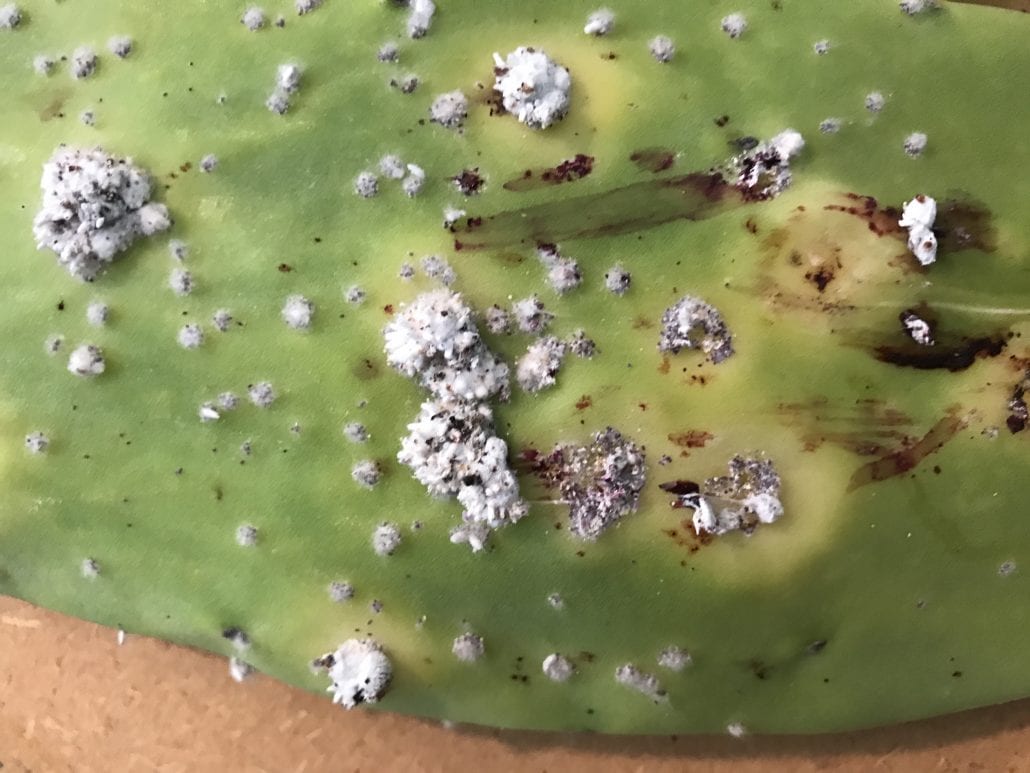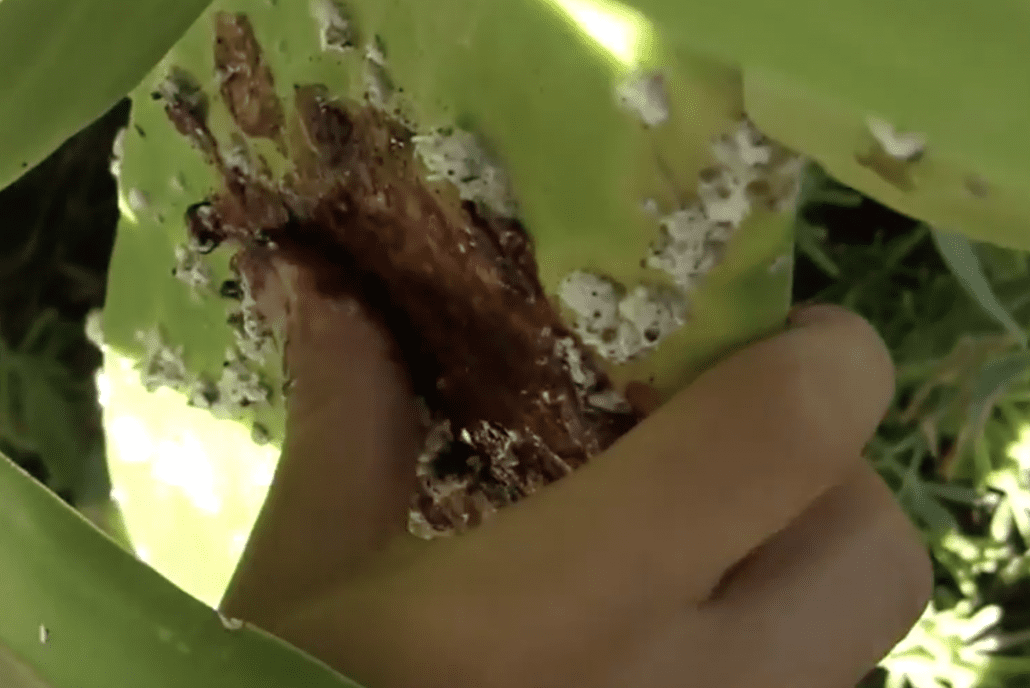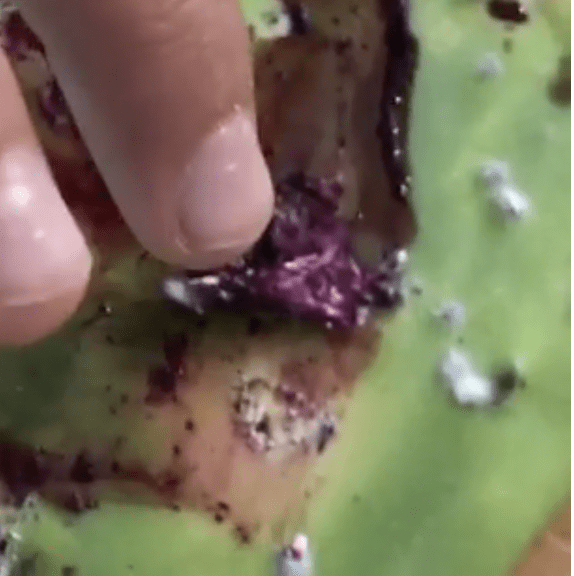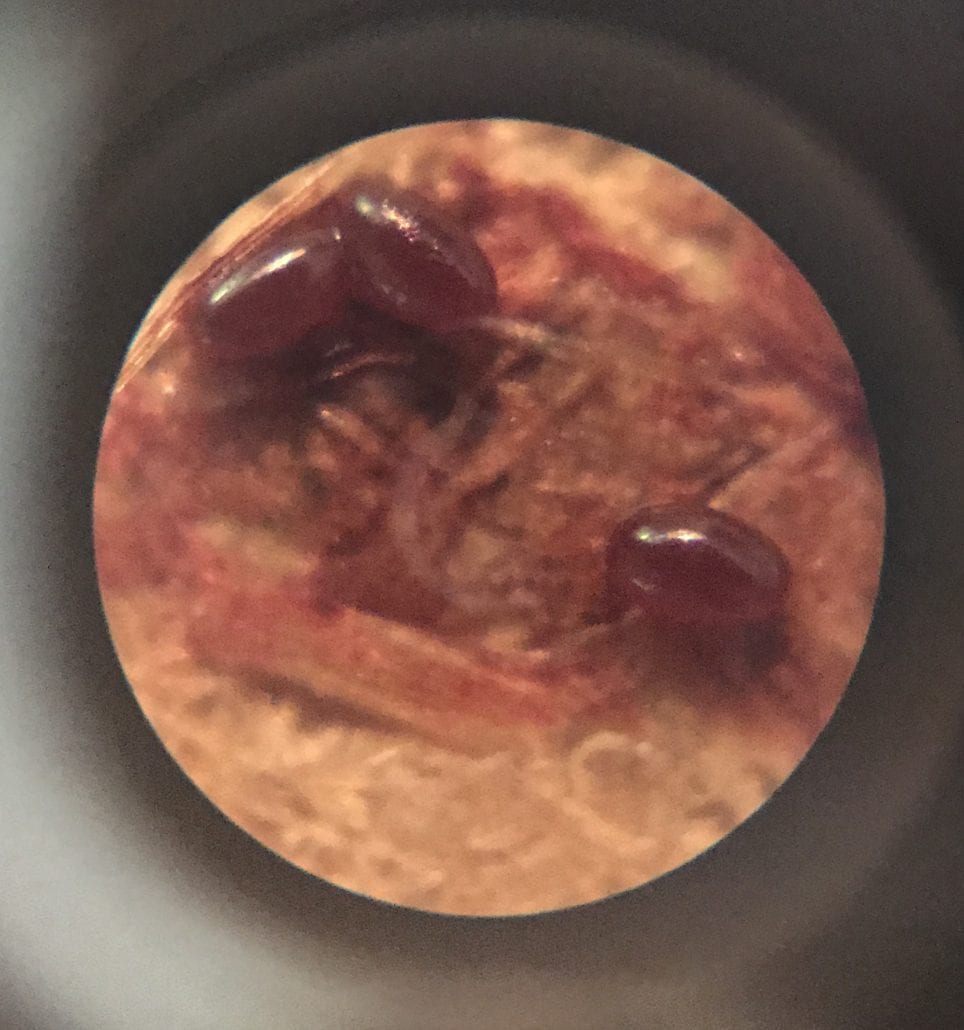
White fuzzy lumps on paddle cactus indicate a parasite that pierces the skin of the plant and consumes its juices. A bit of cochineal (coach-en-ee-al) scale is no big deal, but it does tend to spread and may eventually kill the plant.
Your first line of defense is to blast what appears to be bits of cotton with a hose to dislodge them. However, in crevices and where a hose can’t reach, they’ll proliferate. I take preventive action and scrub my paddle (opuntia) cacti at the first sign of infestation using insecticidal soap. I also remove any badly infested pads and those growing quite close to each other (slice off at the joints).
Then I treat the plants with Safer insecticidal soap. So named because it’s safe for the environment, it controls soft-bodied insects without harming plants like harsher soaps may (don’t use dishwashing liquid). I mix 4 or 5 tablespoons of concentrated Safer soap to a gallon of water, then dip a long-handled, soft-bristle brush into the solution and scrub the pads.

This removes the insects (which are not mealybugs, a common misconception), doesn’t scratch the plants, and leaves a soapy residue that inhibits the pests’ regeneration. I do this “as needed”—about every six weeks in the summer, less in colder months.

In my YouTube video, How to Treat Cochineal Scale, my helper squashes the bugs with his thumb.
Cochineal scale does have the benefit of entertaining garden visitors, especially kids. Squish a white lump and you’ll get marvelously realistic “blood.” (Use cold water to remove any stains on clothing.) Of course if the opuntia has spines—as most do—real blood also is a possibility. If so, use a stick to smear the cottony bumps.

Insects nestled within waxy white fuzz are rich in carminic acid, a red liquid that repels ants and other predators. Used by ancient Aztecs to dye woven fabric, cochineal scale was highly prized by Spanish conquistadors. Supposedly they considered it second in value only to New World silver.

Cochineal insects under a microscope. Actual size: 0.2 inches (5 mm).
Because harvesting cochineal dye is labor intensive, it was replaced by synthetic dyes in the 1800s. Some later were found carcinogenic, so natural red dye is now back in favor with food and cosmetic manufacturers. Next time you pick up something edible, red and packaged, read the label. If ingredients list “carmine,” “cochineal,” “E 120,” or “natural red 4,” it’s been colored— to make it more appetizing—with cactus bugs.
Related info:
See my 2-min. YouTube video, How to Treat Cocineal Scale, in which James, 9, scrubs opuntia pads with a bathroom brush and crushes popcorn-like bugs with his fingertips.
The post Cochineal Scale on Paddle Cactus, What To Do appeared first on Succulents and Succulent Garden Design | Debra Lee Baldwin.
from Succulents and Succulent Garden Design | Debra Lee Baldwin https://ift.tt/2MBcoTL
via IFTTT


No hay comentarios:
Publicar un comentario